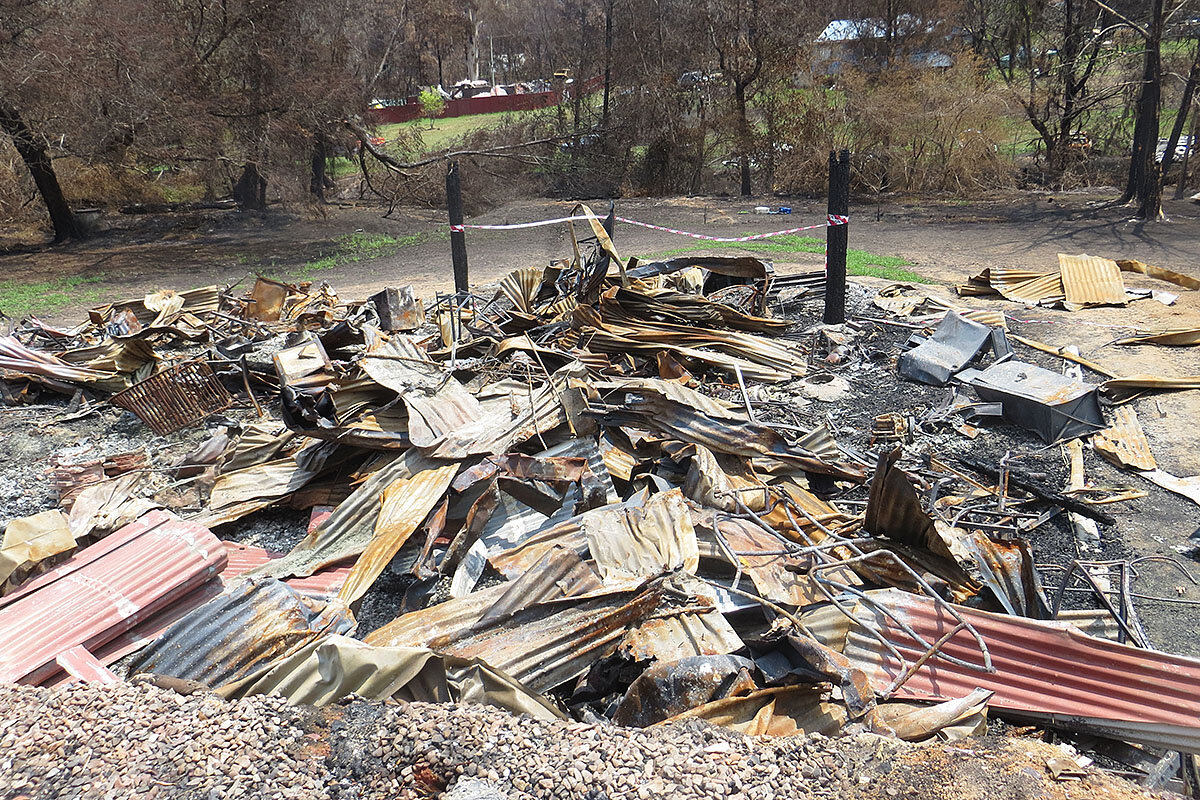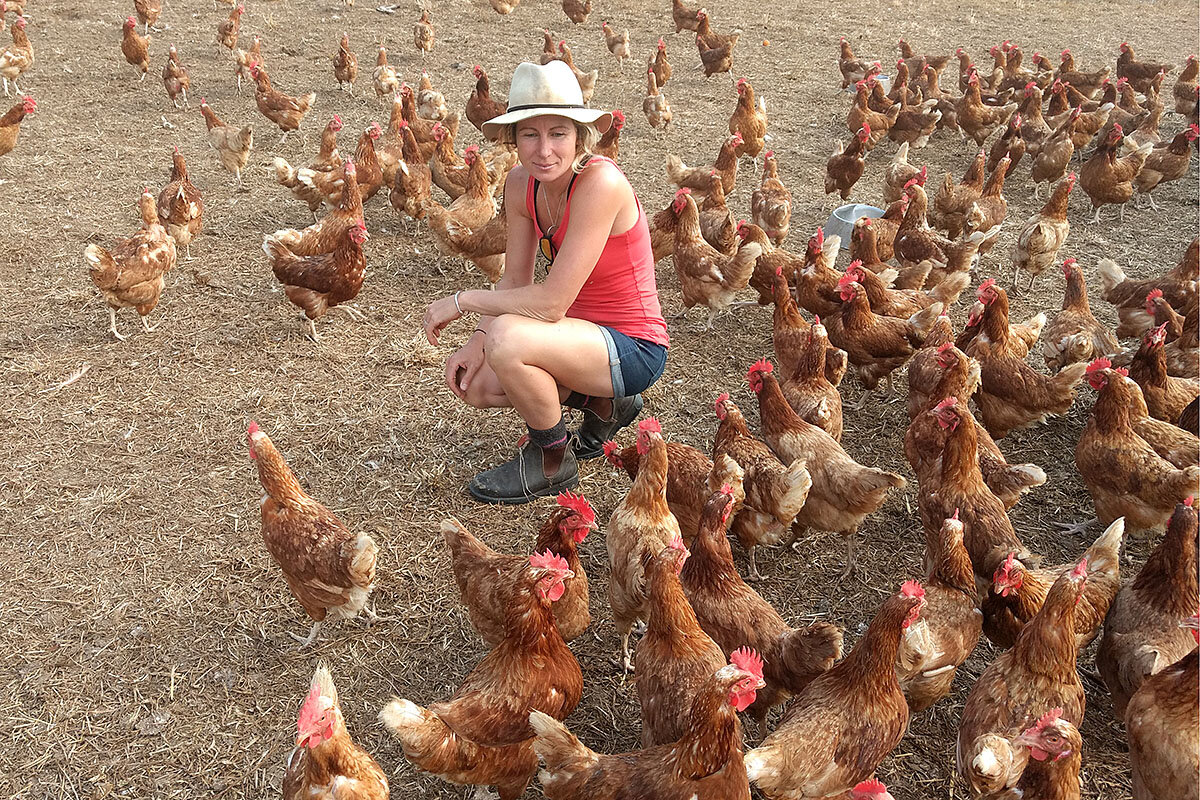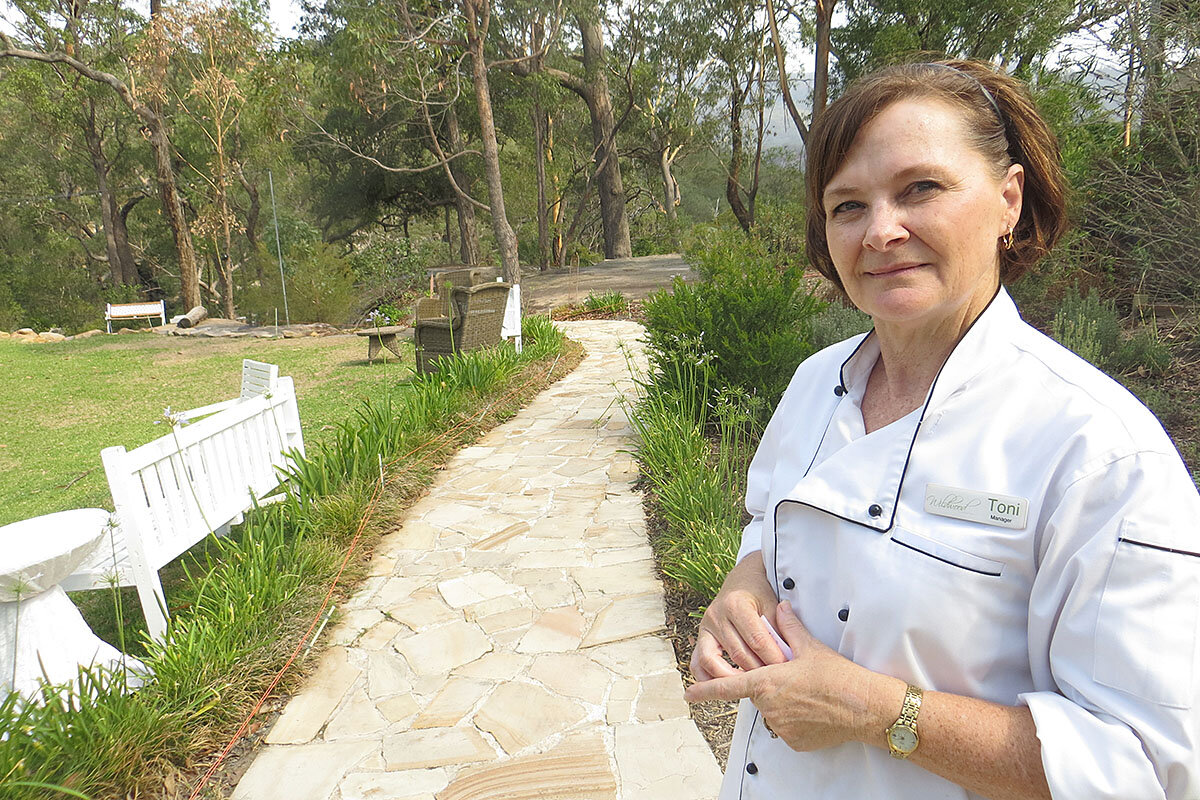‘The heart of Australia’: Fires are out, but how to save the bush?
Loading...
| Mogo, Australia
Torrential rains last month brought relief to Australia after a summer of fire. The toll included 34 people, an estimated 1 billion animals, and some 27 million acres – but also wounds to the national psyche.
“What would Australia be without the bush?” says Monique Maul, who co-owns a cafe in Kangaroo Valley. The town of 900 has seen its bush-reliant economy hurt as visitors stay away and farmers lost livestock and rangeland.
Why We Wrote This
After a summer of fire, followed by flood, the country must reckon with questions about preserving the natural bounty so essential to its self-identity.
“People come here from all over the country and the world to see our wildlife, forests, and beaches,” she says. “That’s the heart of Australia.”
Australia’s nature is at the heart of its identity, and economy. Now, the government faces a reckoning over how to change course, particularly in its fossil fuel sector. But as smoke-filled air over major cities fades away, some fear heightened awareness will recede, as well.
“Australians are very good at post-event resilience – at coming together and overcoming crisis,” says Jerry Courvisanos, of Federation University. “But then we fall back into the old ways. We aren’t good at pre-event resilience – preparing to transform ourselves and the way we live.”
Lorena Granados and Gaspar Roman stood behind three folding tables that held the salvaged remnants of their shared dream. On New Year’s Eve, as a bushfire bore down on their leather goods business, they fled with a random array of handmade wallets, belts, purses, and bags. Three weeks later, they displayed the items for sale in front of their store’s charred ruins, greeting friends and customers as they accepted condolences and wiped away tears.
The couple moved into the shop from a smaller space down the street four months before the blaze ripped through Mogo, a tourist enclave along Australia’s southeastern coast. Ms. Granados estimates they spent $2 million (Australian; U.S.$1.3 million) to purchase and renovate the store, and their insurance will cover only about one-fifth of the cost.
The loss of their nearby home – one of dozens of houses destroyed in the town of 300 residents – deepened the couple’s misfortune and their sense of unease about the country’s future. Their feelings mirror sentiments across Australia after a bushfire season of unprecedented devastation.
Why We Wrote This
After a summer of fire, followed by flood, the country must reckon with questions about preserving the natural bounty so essential to its self-identity.
“We can’t keep doing what we’ve been doing,” Ms. Granados says. “If the government won’t take action, then we – as communities, as business owners – need to start changing or we’ll face these disasters every year.”
Torrential rains brought relief to Australia in early February after a summer of fire that scarred some 27 million acres and the national psyche. The death toll included 34 people and an estimated 1 billion animals, and 57% of Australians reported a direct impact from the flames, smoke, or both.
Climate scientists had warned for decades that global warming could contribute to larger, more destructive bushfires on the continent. The arrival of that apocalypse has sown anxiety in a country that in the past has prevailed over adversity with its optimism intact.
In the aftermath of the fires, Australia must reckon with questions about preserving the natural bounty essential to its self-identity and about its dependence on fossil fuels to propel the economy. Finding solutions will hinge on the country’s willingness to embrace sacrifice, asserts Philip Lawn, an ecological economist with the Wakefield Futures Group, a nonprofit based in Adelaide that advocates for sustainable development.
“The problem is that most people don’t know what has to be done to deal with the climate change emergency,” he says. “They don’t realize that it will require each person to alter the way they conduct their lives.”
‘It’s up to us’
The career switch that Mark and Kristen McLennan made in 2015 moved them out of the classroom and on to the farm. Motivated by an ethos of sustainability, the former school teachers began raising chickens in Kangaroo Valley, a small town in the Southern Highlands between Canberra and Sydney.
The couple’s original flock of 50 birds grew to 7,500 over time as their pastured egg business attracted an expanding client list of cafes, restaurants, and groceries. But their steady progress stalled in late December when, days before a bushfire scorched the valley, temperatures reached 120 degrees and 2,000 chickens succumbed to the heat.
The McLennans estimate they will need to invest $200,000 to recover from their losses. (All dollar figures are in Australian.) The prospect of seasonal catastrophes as temperatures rise – Australia recorded its hottest and driest year in 2019 – worries them as small-business owners and as parents of two young daughters.
“The idea that this summer could very well be the norm is alarming,” Ms. McLennan says. “We can’t just keep assuming the bush will keep coming back.”
Kangaroo Valley, a town of 900 residents, runs on a bush-reliant economy of tourism, outdoor recreation, and sustainable farming. The summer fires hurt all three sectors as visitors stayed away and farmers lost livestock and rangeland.
Domestic travelers make up three-quarters of Australia’s tourism market, and the slow foot traffic in shops and restaurants on the town’s quaint main street reflected their absence. At a cafe called The General, co-owner Monique Maul suggested that the country has neglected the duty of caring for its natural wonders and, in turn, jeopardized a vital cog in its economy.
“What would Australia be without the bush?” she says. “People come here from all over the country and the world to see our wildlife, forests, and beaches. That’s the heart of Australia.”
Prime Minister Scott Morrison has pledged $76 million in aid to revive the country’s tourism industry. The figure pales compared with the Australia tourism council’s estimate that the fires cost businesses $4.5 billion.
The fallout extends beyond financial burdens for those who live and work in the bush. They feel a visceral bond with the land, and the destruction represents an open wound.
Toni and Rob Moran run a wedding venue in Kangaroo Valley that offers vistas of the surrounding hillsides. Flames turned the forest views from green to black this summer, and while their business survived, the couple fear the country will fail again to act on the bush’s behalf.
“It felt like all of Australia was burning,” Ms. Moran says. “It’s pretty obvious what Mother Nature is telling us. It’s up to us to decide whether we’ll listen.”
A need for action
Some 85% to 90% of Australia’s 25 million people live in cities. The population disparity between urban and rural areas poses an obstacle to boosting efforts to preserve the bush, contends Jerry Courvisanos, an associate professor of innovation and entrepreneurship at Federation University in Ballarat.
The scenes of bushfire devastation broadcast around the world and the smoke-filled air that hovered over Canberra, Melbourne, and Sydney have faded away in recent weeks. For Australians in urban centers, Mr. Courvisanos explains, the cataclysm – and a sense of urgency about addressing the causes of climate change – has begun to recede in memory even as the bush and its wildlife struggle to recover.
“Australians are very good at post-event resilience – at coming together and overcoming crisis,” he says. “But then we fall back into the old ways. We aren’t good at pre-event resilience – preparing to transform ourselves and the way we live.”
The bushfires stoked criticism of Mr. Morrison for his climate policies and allegiance to fossil fuel industries that contribute to greenhouse gases. In response, he shifted his rhetoric, speaking of the need to bolster the country’s “resilience and adaptation” to cope with global warming. Yet he has shown little inclination to rein in a fossil fuel sector that makes Australia one of the world’s leading exporters of coal, liquefied natural gas, and iron ore.
At the same time, if the potential for federal policy reform appears low, the push toward sustainability at the state level has gained momentum the past few years. Officials in New South Wales and Victoria, the two states hit hardest by the bushfires, have rolled out formal economic initiatives to improve energy efficiency, reduce waste, and cultivate sustainable growth.
Open Cities Alliance, an association based in Sydney, works with public officials, urban engineers, and utility providers to nurture sustainable communities. Lisa McLean, the group’s chief executive, regards the state strategies as evidence that Australians are willing to adopt new living habits that lighten their impact on nature.
“People are feeling the effects of climate change very deeply, as the fires have shown,” she says. “So we can’t keep the focus only on preparing for climate change. We have to take action to prevent it.”
Ms. McLean holds hope that the perennial allure of vacationing in the bush will persuade urban dwellers to act to save the country’s flora and fauna. “Most Australians have a connection to nature even if they live in the city. It’s something that’s part of our character,” she says. “When they see what the fires have done, it will show them we can’t keep taking things for granted.”
The sentiment resonates with Diane McGrath, who manages the Edgewater Motel in Burrill Lake. Bushfires early in the year forced a mass evacuation of the coastal tourist town, and the motel’s business for January fell by 80% over last year. She frets that recurrences of the summer of fire will destroy more than the bottom line.
“The federal government is looking after the mining industry,” she says. “But if we don’t look after our natural resources, what kind of Australia are we leaving for future generations?”











